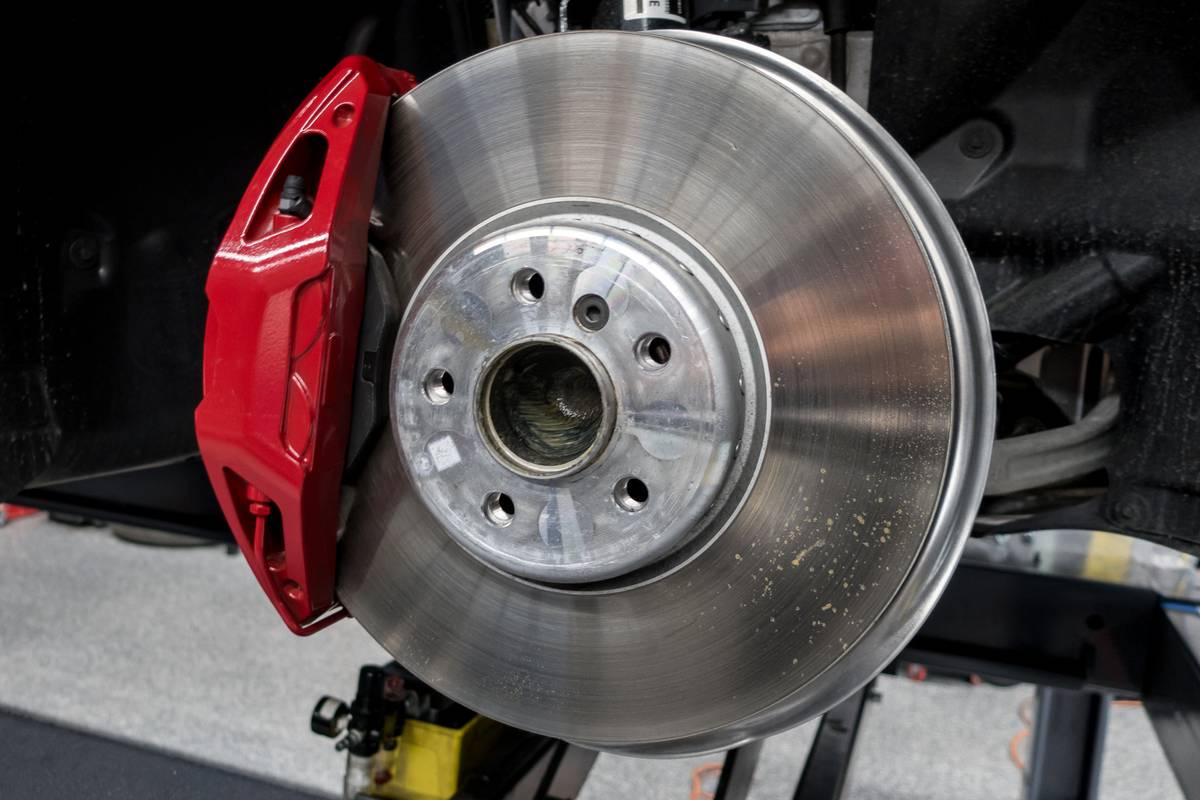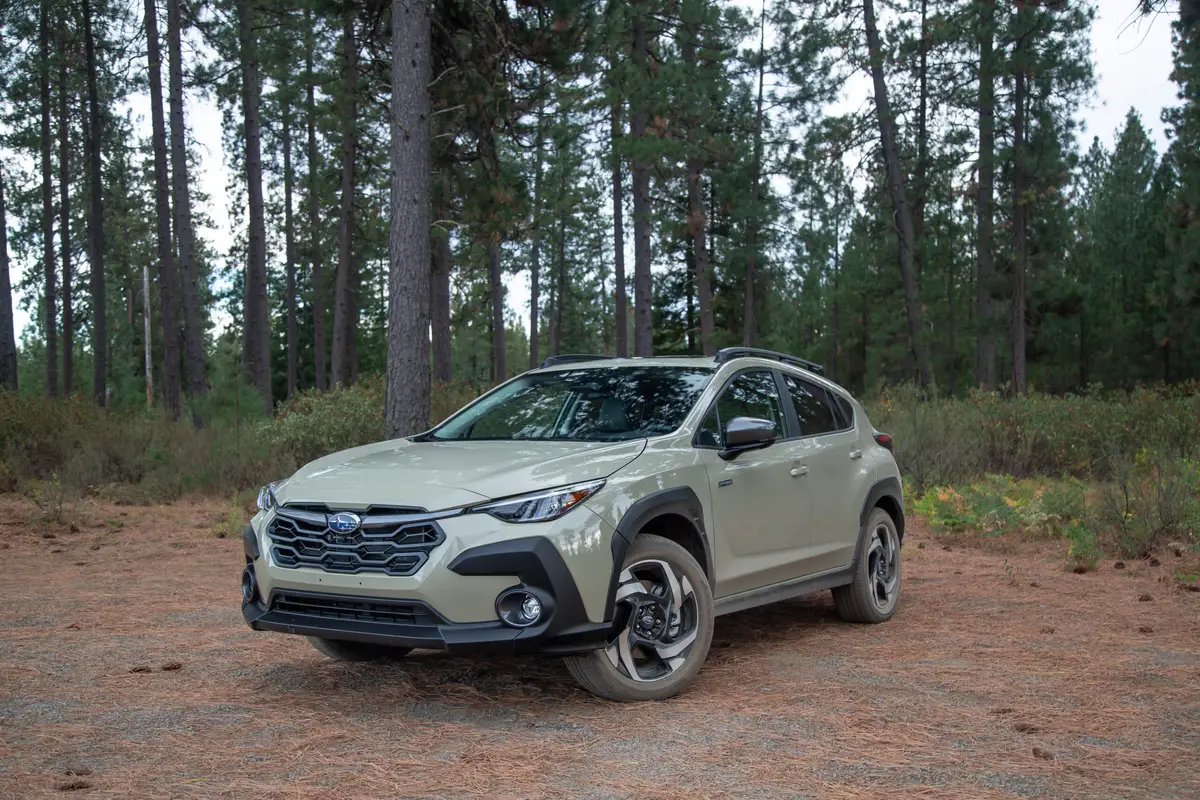Disc Brakes Vs. Drum Brakes: What’s the Difference?

Disc brakes resemble hand brakes on a bicycle, where pulling on the brake lever forces a plier-like device to squeeze rubber blocks against the rim of the wheel to stop the car. Drum brakes are a little more difficult to describe — more on that below.
Related: What Are Run-Flat Tires?
Disc brakes are more modern and effective than drum brakes, which date back almost to the beginning of cars themselves. Disc brakes didn’t come along until the 1950s — and then, mostly on racing cars — and didn’t become common on production vehicles until the 1970s, where they were typically found only at the front.
Why Are Disc Brakes Better?
Disc brakes are considered superior primarily because they’re better at dissipating heat caused by friction — friction being what makes the car stop — and it’s heat that causes brakes to “fade” or lose their stopping power. This is important mostly when carrying or towing heavy loads and when driving down long, steep grades.
Disc brakes are also better at shedding water, which is a concern when splashing through deep puddles. While most modern vehicles now use disc brakes on all four wheels, some still have drum brakes at the rear.
Why? Drum brakes cost less to produce than disc brakes. However, on cars that still have them on the rear, that’s not a big concern since, on nearly all vehicles, the front wheels provide the vast majority of braking force in hard stops. That’s because most vehicles have their heavy engine and transmission in the front, with even more weight shifting forward as you brake.
How Disc Brakes Work
Before getting into why disc brakes are more effective than drum brakes, let’s look at their individual designs.
As mentioned, disc brakes work like hand brakes on a bicycle — a plier-like device squeezes rubber blocks against the rim of the wheel in response to brake lever pressure. Some modern bikes instead use a softball-sized disc attached to the hub of the wheel that provides the friction surface, as it’s less likely to get wet or muddy, which would make the rubber blocks slide instead of grip.
The latter, especially, closely mimics the design of disc brakes on a car, though the brake disc is nearly as large in diameter as the vehicle’s wheel — and is where the design gets its name.
On a car, the plier-like device is called a caliper — which is roughly the size of your hand and is activated by hydraulic pressure — and the rubber blocks are replaced by pads with harder friction material that fit inside the calipers. When you press on the brake pedal, brake fluid is forced into the caliper, which squeezes the pads against the rotor.
On a car with disc brakes, you can often see the shiny, silver-colored disc by looking through the wheel. Part of the disc will be covered by the caliper, which is usually darker but sometimes painted a bright color.
How Drum Brakes Work
Drum brakes are a little more difficult to describe.
Imagine a straight-sided bowl or baking pan, and you’d be pretty close to what the drum part of drum brakes looks like — though they’re typically thicker and made of iron, so they’re more substantial.
Inside the drum are the shoes (aptly named, as they look somewhat like walking shoes with a curved sole), which replace the rubber blocks on a bicycle or the pads on disc brakes as the friction material. The shoes are mounted to a backing plate, which essentially forms a “lid” on the brake drum. Between the shoes is a cylinder with expanding ends, and when you press on the brake pedal, brake fluid is pumped into the cylinder, and the expanding ends push the shoes against the inside of the brake drum.
With drum brakes, all you can see through the wheel of the vehicle is the outside of the drum — what would be the bottom of the baking pan — and it’s usually dark colored, fairly flat and often rusty.
One reason disc brakes are better at dissipating heat is the disc is open to the air, and the pads only cover a small portion of the disc. That also allows water to run off better, as it’s usually flung from the surface by centrifugal force. By contrast, a drum brake is much more enclosed, which can trap both heat and water.
More From Cars.com:
- Which Cars Have Free Maintenance for 2021?
- How Do I Find the Correct Tire Pressure for My Car?
- Is Your Check-Engine Light On? 5 of the Most Common Causes
- Why Do I Keep Getting Phone Calls About My Car’s Warranty Expiring and How Do I Stop Them?
- What Is Coolant and Is It the Same as Antifreeze?
Cars.com’s Editorial department is your source for automotive news and reviews. In line with Cars.com’s long-standing ethics policy, editors and reviewers don’t accept gifts or free trips from automakers. The Editorial department is independent of Cars.com’s advertising, sales and sponsored content departments.
Featured stories





